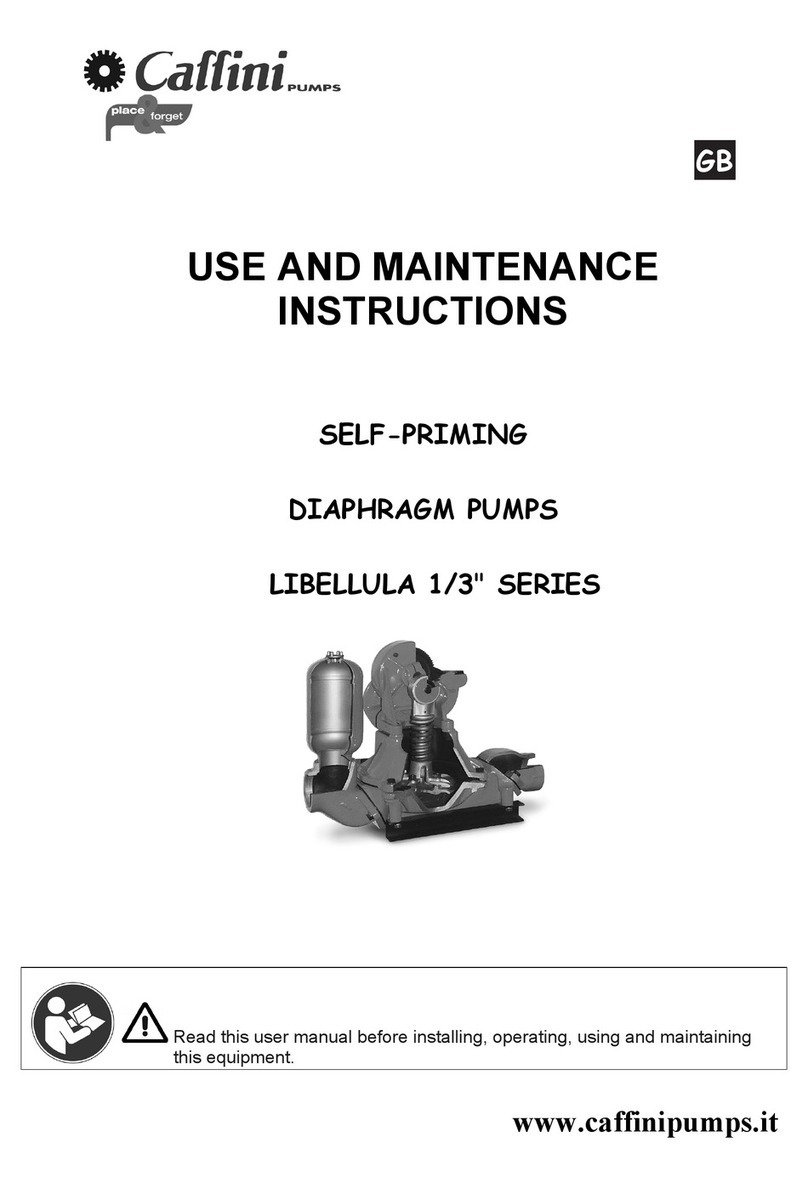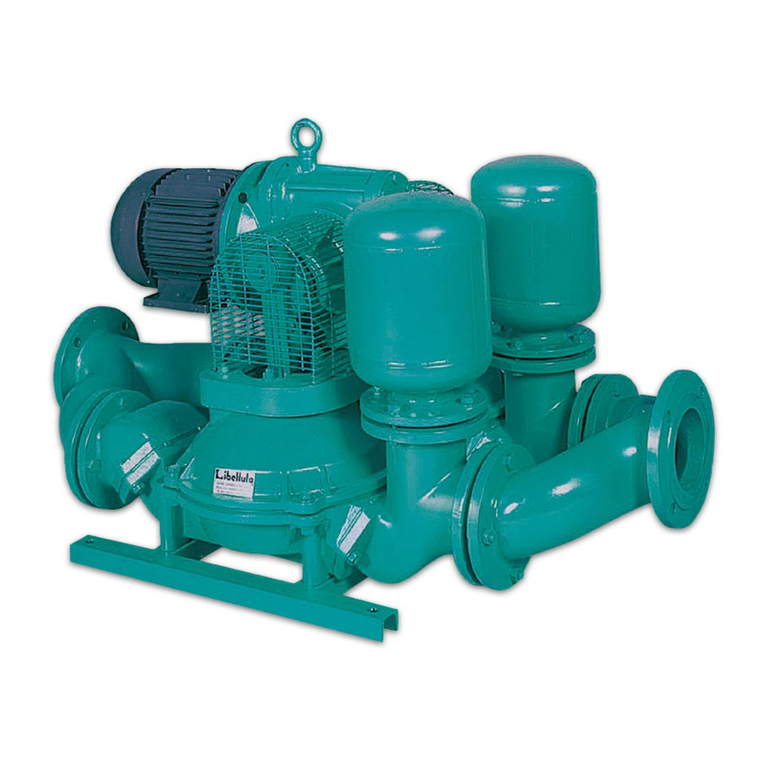
4
Safety instruction
This manual contains warning and safety symbols. Do not ignore the instructions. They
are provided for the benefit of your health and safety and to prevent damage to the
environment and the pump unit.
When the danger symbol with the text DANGER is shown, it is accompanied by
information that is of great importance for the safety of everyoneconcerned.
Ignoring the information can result in injury (possibly severe) or evendeath.
WARNING
When the warning symbol with the text WARNING is shown, it is accompanied by
information that is of great importance for everyone concerned with the pump unit.
Ignoring the information can result in injury or damage (possibly severe) to the pump
The pump unit conforms to the European Machinery Directive. However, this does not
exclude the possibility of accidents if used incorrectly.
Use of the pump for an application and/or deployment of the pump in an environment
other than defined at the time of purchase is strictly prohibited and can result in a
hazardoussituation.
This is particularly true for corrosive, toxic or other hazardous liquids. The pump unit
may only be installed, operated and maintained by persons who have received
appropriate training and are aware of the associated dangers.
The installer, operator and maintenance personnel must comply with the local safety
regulations. The company management is responsible for ensuring that all work is
performed by qualified personnel in a safe manner. It is not permitted to make changes
to the pump unit without written permission from Caffini pump.
Ensure that hot/cold and rotating parts of the pump are shielded adequately to
prevent unintentional contact.
It is not permitted to start the pump if such guards are missing or damaged.
The company management must ensure that everyone who works with/on the pump unit
is aware of the type of liquid that is being pumped. These persons must know what
measures are to be taken in the event of leakage.
Dispose of any liquids that have leaked, in a responsible manner. Observe local regulations.
Never allow the pump unit to run with a blocked discharge line. The heat build-up could lead
to an explosion
WARNING
Only appropriate fire extinguishers (e.g. carbon dioxide) are to be used in case of fire
or any other situation where open flames appear inside or outside the equipment. It is
strictly prohibited to use water to put out the flames
Do not
1. Do not carry out maintenance operations during functioning.
2. Do not run the petrol or diesel engine inside a closed environment. The exhaust gases
contain carbon monoxide, an odorless and deadly poison.
3. Do not near hands or feet to the moving or rotating parts.





























